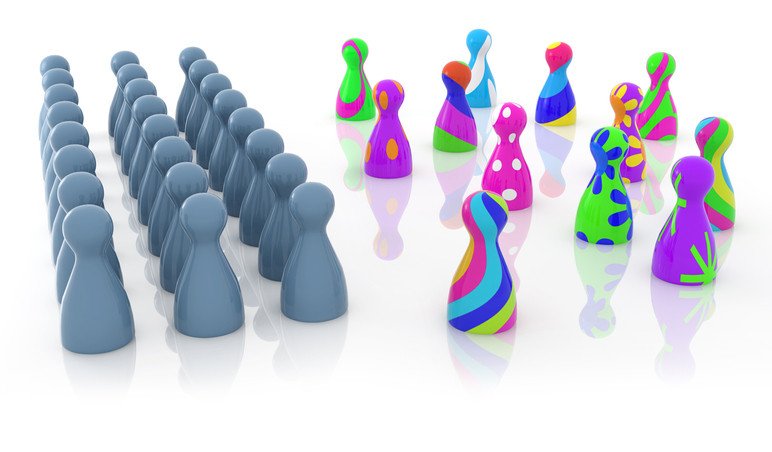Gender Fluidity and Its Implications in Contemporary Society
Introduction
Gender fluidity challenges traditional notions of gender by acknowledging a spectrum of gender identities beyond the binary male and female categories. This concept has significant implications for individual identity, social norms, and legal frameworks. Understanding gender fluidity and its impact on contemporary society is crucial for fostering inclusivity and equality.

Defining Gender Fluidity
What Is Gender Fluidity?
Gender fluidity refers to a gender identity that shifts over time or in different contexts. Unlike static gender identities, individuals who identify as gender fluid may experience their gender in various ways:
- Dynamic Identity: Gender fluid individuals may fluctuate between different gender expressions or identify with multiple genders at different times.
- Non-Binary Experience: Gender fluidity often falls under the non-binary umbrella, which includes identities outside the traditional male and female categories.
Importance of Recognizing Gender Fluidity
Recognizing gender fluidity is essential for validating diverse gender experiences:
- Personal Validation: Acknowledging gender fluidity supports individuals in expressing their true selves.
- Social Inclusion: Understanding gender fluidity promotes social acceptance and reduces discrimination.
Implications of Gender Fluidity in Contemporary Society
Impact on Personal Identity
Navigating Gender Expression
Gender fluid individuals navigate their gender expression in ways that reflect their evolving identity:
- Flexible Presentation: Gender fluid people may present themselves differently depending on their current gender experience.
- Self-Expression: Allowing individuals to express their gender fluidity helps in fostering a supportive environment.
Case Example: Public Figures
Public figures who openly identify as gender fluid contribute to greater visibility and understanding of gender diversity.
Challenges in Legal and Social Structures
Legal Recognition
Legal systems often struggle to accommodate gender fluid identities:
- Identification Documents: Many legal documents, such as passports and driver’s licenses, do not account for gender fluid identities.
- Legal Protections: Gender fluid individuals may face challenges in accessing legal protections and services.
Case Example: Gender Marker Policies
Policies that offer options beyond male and female on official documents can better accommodate gender fluid individuals.
Influence on Workplace Dynamics
Creating Inclusive Work Environments
Workplaces must adapt to support gender fluid employees:
- Non-Binary Policies: Implement policies that respect and accommodate various gender identities.
- Inclusive Practices: Train staff to understand and support gender fluidity and provide appropriate facilities, such as gender-neutral restrooms.
Case Example: Gender-Inclusive Workplaces
Organizations with gender-inclusive policies create more supportive environments for gender fluid employees.
Social Norms and Public Perception
Challenging Traditional Norms
Gender fluidity challenges conventional gender norms:
- Cultural Shifts: Societal norms are evolving to recognize and accept diverse gender identities.
- Media Representation: Increased media representation of gender fluid individuals helps challenge stereotypes and promote acceptance.
Case Example: Media Visibility
Positive media portrayals of gender fluid individuals contribute to broader societal acceptance and understanding.
Supporting Gender Fluidity in Society
Promoting Awareness and Education
Educational Initiatives
Education plays a key role in fostering understanding of gender fluidity:
- Curriculum Development: Include gender diversity and fluidity in educational curricula to raise awareness from an early age.
- Training Programs: Offer training programs for educators, healthcare providers, and employers on gender fluidity and inclusivity.
Case Example: School Programs
Schools that integrate gender diversity education support a more inclusive and informed student body.
Advocating for Policy Changes
Legal and Institutional Reforms
Advocating for policy changes is essential for supporting gender fluid individuals:
- Legal Recognition: Work towards legal recognition of gender fluid identities and options for gender markers on official documents.
- Inclusive Policies: Develop and implement policies that respect and accommodate gender fluid individuals in various institutions.
Case Example: Advocacy Campaigns
Campaigns that push for legal and policy reforms contribute to greater recognition and support for gender fluid people.
Conclusion
Gender fluidity represents a significant shift in understanding gender and its implications in contemporary society. By recognizing and supporting gender fluid identities, challenging traditional norms, and advocating for legal and social changes, we can foster a more inclusive and equitable society. Education, policy reforms, and increased visibility play crucial roles in promoting acceptance and ensuring that gender fluid individuals can live authentically and with dignity.



